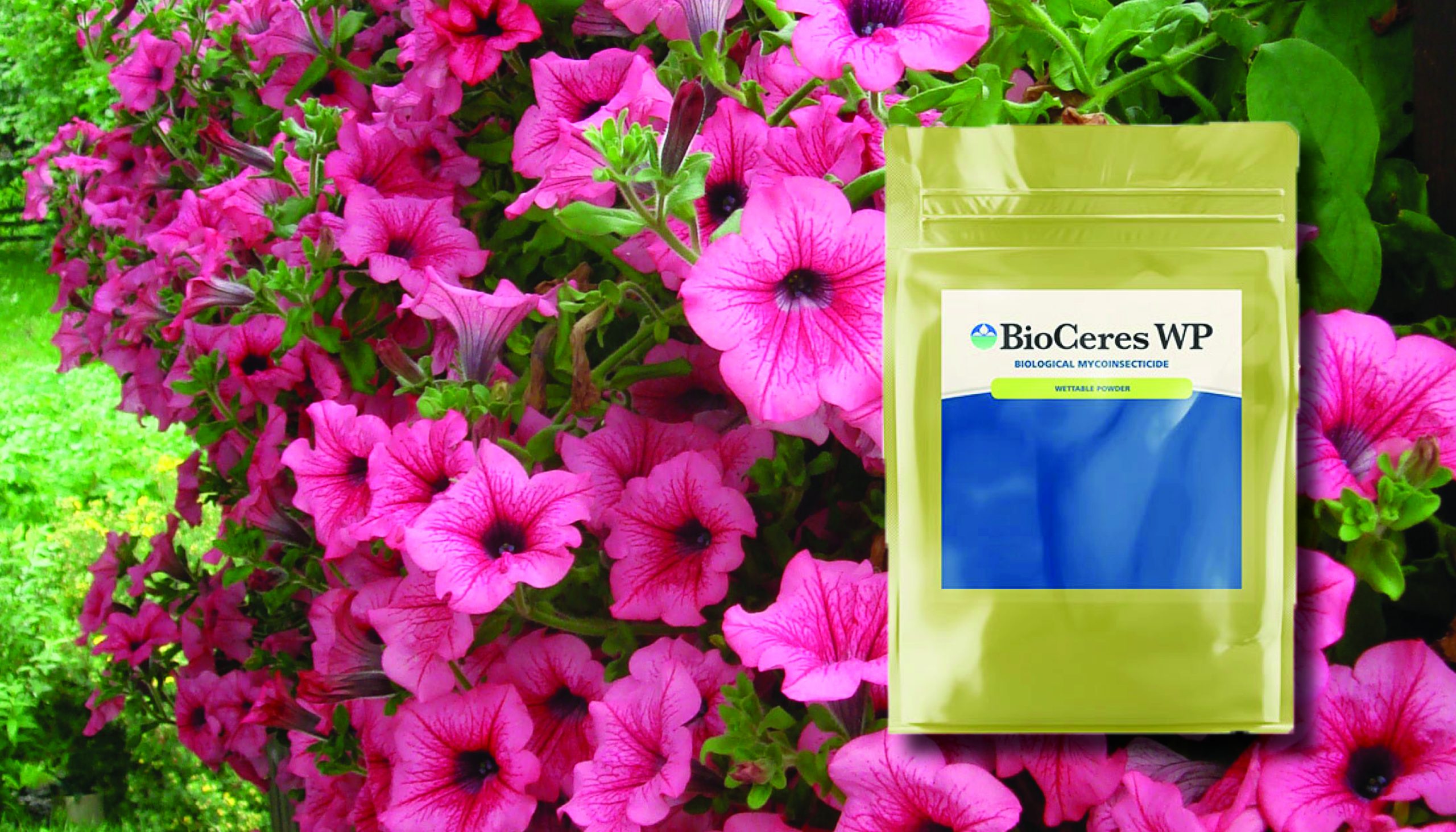
There are a number of microbial insecticides on the market today, and every spray rotation and integrated pest management program can benefit from their use. A microbial insecticide is defined generally as a naturally occurring fungal or bacterial microorganism, and for that reason, these present an entirely different mode of action from conventional insecticides.
Microbial insecticides have short re-entry intervals, no preharvest intervals, and no limits to the number of applications, as there is no documented resistance in the target pest populations. For added benefit, they are generally gentler on beneficial insects than conventional chemistries. These products come with a record of good plant safety and commonly a wide variety of edible plants on their labels. Many of these products are suitable for organic production given their OMRI certification as well (see below).
Fungal agents attack the insect exoskeleton, while bacteria need to be ingested or enter through an opening on the pest. This naturally occurring process takes time, sometimes several days to see results. Microbial insecticides have short residuals, so it is necessary to make multiple applications to keep a high level of the inoculum in the environment. To maximize the effectiveness of any microbial product, it is important to understand the environment where they work best and take advantage of those conditions that give the microorganisms an advantage:
- Ideal canopy humidity above 70% for an extended period
- Ideal temps between 65-70 degrees F
- Low light conditions
Early morning, evening, and overcast days are ideal to apply microbials. As with most spray applications, good coverage is key, so it is important to maintain good cultural conditions to prevent foliar diseases. In addition, most of the microbial products listed below are compatible with foliar fungicides.
Microbial insecticides should not be used against high pest pressure when there are other options. They are best used on emerging pest populations, as they take time to get control. Nymphal/pupal stages and larvae are more susceptible to microorganisms, so early introduction of the microbial is the most efficient strategy. However, many microbials can be tank-mixed with a conventional chemical to get a faster knockdown. See the product label or contact GGSPro for more details. Fungal agents can be mixed with most Azadirachtin insect growth regulator (IGR) products to slow down the molting process and give the fungal spore more time to infect the insect. Bacterial formulations benefit from the addition of a spray adjuvant to help with coverage.
Microbial insecticides contain live organisms and have some additional handling and storage requirements. Do not let these products freeze. High heat reduces shelf-life and effectiveness of the products considerably. Even though these microorganisms are compatible with many conventional chemicals, care should be taken to provide dedicated spray equipment, or ensure that the spray equipment has been thoroughly cleaned and rinsed before introducing microorganisms. Not all fogger types are compatible with the use of microbial pesticides. If you have any questions related to compatibility with your model of fogger, proper storage requirements, and product shelf-life inquiries please contact GGSPro at ggsprotech@griffinmail.com.
| Major Greenhouse Pests Labeled | OMRI Listed | REI hours | Item Number | Size | |
|---|---|---|---|---|---|
| BioCeres WP Beauveria bassiana strain ANT-03P |
Aphid, beetles, plant bugs, thrips, weevil, whitefly pupa |
Yes | 4 | 70-1245 | 1 lb |
| BotaniGard ES, BotaniGard 22 WP Beauveria bassiana strain GHA |
Aphid, mealybug, plant bugs, thrips, weevils, whitefly pupa |
No | 4 | 70-1251 WP | 1 lb (12/case) |
| 70-12501 ES | 1 qt | ||||
| 70-12511 ES | 1 gal | ||||
| BT NOW Bacillus thuringiensis ssp. kurstaki strain EVB-113-19 |
Caterpillar larvae | Yes | 4 | 70-1290 | 1 gal |
| DiPel Pro DF Bacillus thuringiensis kurstaki ABTS-351 |
Caterpillar larvae | Yes | 4 | 70-1450 | 1 lb |
| Gnatrol WDG Bacillus thuringiensis israelensis |
Fungus gnat larvae | Yes | 4 | 70-1716 | 16 lb |
| Grandevo CG Chromobacterium subtsugae PRAA4-1 |
Aphid, beetles, caterpillars, mealybug, mites, plant bugs, thrips, weevils, whitefly pupa |
Yes | 4 | 70-1751 | 1 lb |
| 70-1754 | 4 lb | ||||
| 70-1756 | 10 lb | ||||
| Mycotrol ESO, WPO Beauveria bassiana strain GHA |
Aphid, mealybug, plant bugs, thrips, weevils, whitefly pupa Soil drench grubs and weevil larvae |
Yes ESO WSDA WPO |
4 | 70-2416 ESO | 1 qt |
| 70-2417 ESO | 1 gal | ||||
| 70-2420 WPO | 1 lb | ||||
| NoFly Isaria fumosorosea Apopka strain FE 9901 |
Aphid, leafhoppers, mealybug, plant bugs, spider mite, thrips, whitefly pupa and others |
Yes | 12 | 70-2509 | 2 lb (12/case) |
| Velifer Beauveria bassiana strain PPRI 5339 |
Aphid, mealybug, mites, thrips, whitefly |
No | 12 | 70-9540 | 1 qt |
| Venerate Burkholderia spp. strain A396 |
Aphid, mealybug, spider mite, thrips and whitefly pupa | Yes | 4 | 70-9461 | 1 qt |
| 70-9464 | 1 gal | ||||
| 70-9465 | 2.5 gal |
*Contact Griffin Greenhouse Supplies for product number and pricing information on BCA options
